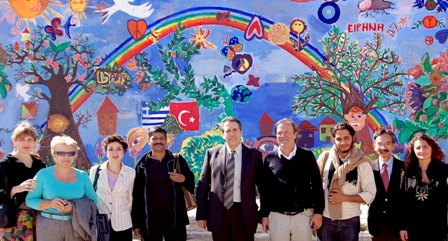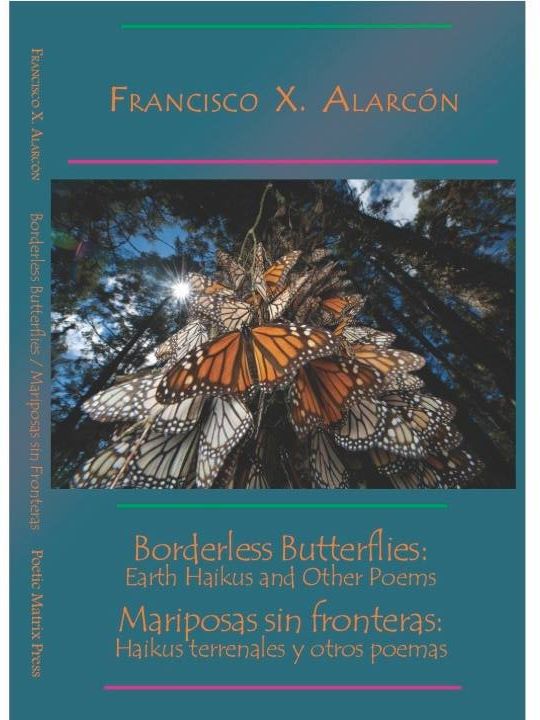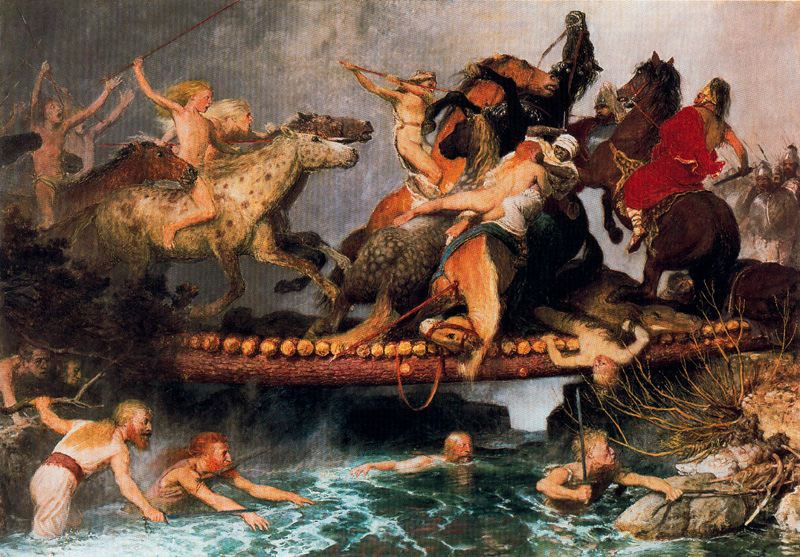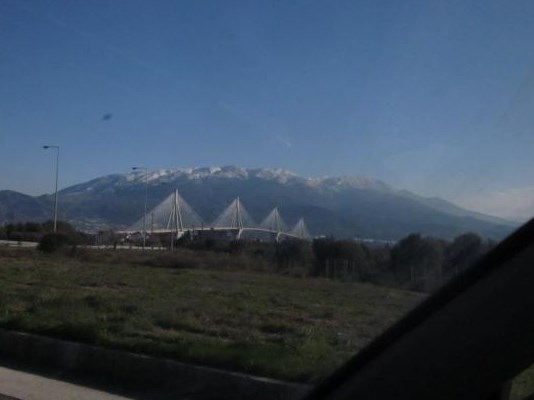Part B: Poets as bridge makers
In my poem about Athens written in 1999, I ask what happens if the doubt in poetry has become so great that no bridge can be found between the past and the present, while the future remains as evasive as ever? Already here a special kind of bridge is meant. Many poets have a definite answer for that.
The Greek poet Yiorgos Chouliaras is both a poet and a diplomat who works for the Greek Foreign Ministry. As such he has spent a lot of years in Washington, and even more so in New York as well as in Dublin, Irland. Upon returning, he wrote a poem in which the question is asked, is that you, the stranger in that photo? To return back home after many years away is like converging alienation with estrangement. It gives the person the advantage to reflect upon one's self-understanding differently for otherwise, the outcome a different self understanding compared to the one had before departure.

Brooklyn Bridge
BRIDGES
An eye for a tooth the doctor may have said
as I was looking sideways from her chair
while she worked standing and I day dreamt
that numb from the tenderly pending motion
of threads of hair that lightly obscured her eyes
I would find the potion that unavailingly extends
braids gathered under a medical cap
seeking to lure me to highways and alleys
of desire which like the Brooklyn Βridge
in that irresistible poem by Hart Crane connects
her house with the Manhattan doctors’ offices
but I doubt that she ever said anything like that
as the demands of dentistry are very high
and who has the time to read ancient scripts
that could bridge the Atlantic itself
on their wings bringing back this angel
to Polish soil again where an ancestor
was toothlessly dreaming of smiling rabbis
Translated by Maria Koundoura & the author
[First published in the “Bridges” 2015 Calendar of the Hellenic Authors’ Society]
The poem gives an idea of distance between being back home in Europe and across the Atlantic in the United States of America or Canada. The poem describes in reality several and different kinds of bridges: one connects Manhattan with Brooklyn, but another one is an imagined bridge over the Atlantic back to Europe, and then there is the braid of the female dentist which runs along the edge of her hair. Clearly the poem is written in such a language that it can remind of the many migrants who had gone into exile in the United St ates of America, especially when they had to flee Nazi Germany. For repeatedly they would have such sudden flash-backs which take them back to where they came from.
By the way a huge bridge implies equally an airlift, very much like the way West Berlin was supplied by air when the Soviet Union and East Germany cut off the city from its supply route from the West. It was called the butter bridge.
Still, in literature, there dominated for long these intellectual traces of those who had left Europe for the Free World of America. Once there, and past the statue of Liberty, Yiorgos Chouliaras relates to another imaginary bridge, namely a 'thought bridge' which connects him being in Brooklyn and then in the office of the dentist. Once there, in the office of the dentist, he follows another bridge created by the braids of her hair. The poem reflects in that way an erotic imagination transformed into a wonder of simultaneous existences seemingly so close to one another and yet like America and Europe completely separate existences.
There is still another connotation to another bridge in this poem, namely the Rio Bridge by Patras. Interestingly enough, the Hellenic Authors Society organized a poetry festival in honour of the Rio bridge as it symbolizes in Greece a new time span which came about in the wake of preparations for the Olympic Games which were held in Athens 2004.
Again Anna Arvanitaki would say in Greece it meant a long time before the bridge was build, there prevailed many expectations as to all the changes the construction of such a br idge could bring about. All sorts of things, even those short of a miracle, were imagined. At the same time, the ferry boat owners fret ted that they would face a loss of business once a bridge was build. Above all one prime expectation was linked to what was deemed to be absolutely necessary, namely to lift the isolation of that part of Greece which existed on the other side and which stretches all the way to Ioannina and the border with Albania. That part of Greece has quite a different history since it was emancipated from the Ottoman rule not in 1821, but only in 1913. So expectations were linked to possible alterations in dispositions of a country coming together in quite a different way when compared to the past.
Rio-Atirion bridge by Patras
German Droogenbroodt
According to the Flemish poet Germain Droogenbroodt, special bridges can be created by poetry. They are written to bridge silence, made possible by being no longer afraid of such a silence which has the capacity to silence oneself/others.
Writing poetry
Find th e bottom
at the bottomless
read the hours
in the whirlpool
of time
experience silence
not as void as
but as fullness
unfold light
with the shadows
of the night
span a bridge
with unspoken words
create a rainbow
with the colours of peace.
Germain Droogenbroodt
The wish to create a rainbow with the colours of peace is an almost typical symbol which children paint as was the case when Greek and Turkish children and youth got together in Izimir to paint a Kids' Guernica – Guernica Youth mural by discovering that paint was their first common language.

ln front of the Izmir-Chios Peace Mural 2007
The Welsh understanding of bridge building as 'bridging of cultural differences'
The Welsh poetess Menna Elfyn points out that:
In the Mabinogion, old welsh tales – Bendigeidfran, the giant, bends over and makes himself to be a bridge between Wales and Ireland. Consequently an assertive phrase expresses a form of common wisdom related to what a leader should be and do:
A fo ben, bid bont.
Let him who is head/leader-- be also a bridge.
To this she adds the significant afterthought: „Wish we had more leaders who are also bridges today“, for rarely are there politicians who can bridge difference and still find common grounds for agreement with the other side.
However, Menna Elfyn expresses in her poem about a wooden bridge something else, something far more important as to the difference a bridge can make when compared to the times when you had to wade still through the river and risked on the way to hit your toes against rocks.
Pont Lledr
Bwa o bren sy’n eco
Uwch ben y llif o’r llifio;
Gwnaed â llaw ganllaw gain
A fo ben bid bont i’n harwain.
Fe groeswn bontydd bywyd,
cymodi, a’u codi o’r newydd.
Er cerrig rhyd yn eu hyd islaw,
Ein troedle’n ynys heb frys, heb fraw.
Lledr Bridge
Sighing inside the timber’s bow
his saw’s refrain, across the flow.
His hands are in this grain
and so hold yours again
as you cross to the other side.
Hold onto him now, your guide.
The river’s rocks cannot hurt
the steady steps of your heart.
Menna Elfyn
(tr. Christopher Meredith and Paul Henry)
What counts fore most are “the steady steps of your heart”, and this day and night, 24 hour, all your life! There is a lot of reassurance even when without a bridge, the heart takes nevertheless “steady steps.” For the heart is the guide. A wonderful metaphorical glimpse is allowed through such a poem in what may be after all more than mere reassurance. It is called confidence in life itself, and here the poetess wishes to take you from the rhythm developed in the first stanza to that all important second one.
Jael Uribe
Whenever there is a silence to overcome, it is a matter whether or not a person remains locked inside, unable to speak up. It may help if such good questions are posed, so that the person begins to unfold. Kant named that to be a sign of creativity. If the unfolding translates into writing a poem, then traces are left out of which a personal identity and a sense awareness of the world can be created.
One bridge
by
Jael Uribe
All what it takes
to extend our minds towards infinity
is a bridge.
We need one bridge to change it all,
to retrieve the world from agony, confusion and pain.
Don't you see what I am saying?
A bridge is an outcast bird
in open space.
No cage to conceal the dreams.
No time for constructing walls to separate men
from themselves.
A bridge I our only chance left
to make gold out of burned hay.
How far removed are we from ourselves?
And then,
while shadow surround our heads like clouds
and we find ourselves amidst a humanity turned savage,
a single voice can be heard
shouting out in the open JUSTICE,
to say it is not too late to built a bridge,
so that we can find new way to meet our choice, in order to escape.
Jael Uribe is a special poetess who has overcome cancer and founded thereafter a platform called 'Women's Scream' with the aim to help women escape their prison of silence. Too many women remain on the side lines, do not speak up and therefore never realize what talents they have inside of themselves. Especially those affected by cancer, but not only, all need to talk openly what has befallen their body. Naturally cancer is no longer what it was ten years ago, but it is still a phenomenon which besets the public imagination with all kinds of negative images. All the more important is it especially for these women, but also men to find the one bridge which allows them to cross over to the other side where they can continue a 'normal' life. 1
Francisco Alarcon
Francisco Alarcon ex plains that the poem "Poetas puentes / Bridge Poets" celebrates an event where Chicano/Latinos poets from the USA joined Mexican poets in the border city of Tijuana, Mexico. He adds that “for us poets, borders do not exist and we as poets are building human bridges across national frontiers.” In short, it makes poets into bridge builders who like the butterflies cross over borders all the time.
BRIDGE POETS
|
bridge poets don't recognize borders |
bridge poets have chapbooks as passports |
bridge poets extend their arms |
|
they cross outlaw poetic tunnels |
they write verses granting them life-long visas |
until forming human bridges over rivers |
|
they are migrant butterflies of the world |
they are spiders weaving their webs |
bridge poets compose bridge poems - |
|
catacomb goers who meet in broad day |
with silk as fine as sighs |
they are the soul the heart of the world |
© Francisco X. Alarcón
Tijuana, Baja California Norte
August 12, 2012
Indeed, bridge poets do not recognize borders like the butterfly. This of great importance especially where sharp borders have been drawn like the one along the Mexican-USA border. In an age which celebrated the coming down of the Berlin Wall in 1989, it amazes how many more sharp borders have been created. Even Europe has become a fortress like set-up with sharp borders being drawn along the Greek-Turkish border with the aim to keep our migrants. In the meantime, the once loved Mediterranean Sea has become a grave yard for countless migrants who never made it across these dangerous waters.

Francisco X. Alarcon explains in a letter ( ) that
|
„Borderless Butterflies / Mariposas sin fronteras, that has as a leif motif the monarch butterflies, the ultimate migrant beings that leave Mexico in Spring and go north to the USA and Canada and after the 4th generation return to winter in their homeland in Mexico. For me, borders are not only ideological constructs but physical, everyday realities that some times turn lethal. The USA - Mexico border is a open bleeding wound since the Treaty of Guadalupe-Hidalgo of 1848 when half of Mexico was taken by the USA as a result of an unjust war and the territorial expansion driven by Manifest Destiny, the supposedly divine design for the exceptional nationalism of the USA. Hundreds of Latinos died every year trying to cross this border. The world for the most part is indifferent to the horrific fate.“ 2 |
Bridge poets cry out against all these injustices. It means also working against forgetting what constitutes after all history. Often the latter is not told out of the perspective of people, but is distorted due the prevailing national narratives, which are engaging people into some kind of myth building process about the nation and the state as being identical, when it is not. However, out of the perspective of a butterfly who observes these absurdities which man has constructed, a poetic observation can emerge as if a metamorphosis has just taken place. With the speed of light an original question, why these borders, can be transformed into a further going answers which do provide some insights into the riddle of mankind due to all these prevailing absurdities. It is one thing to describe them, another not to accept them as a human fact, for they need to be dissolved, but not overcome by simply trespassing these borders. Even if in German philosophy it is claimed that “thinking” is about 'Überschreiten von Grenzen' – trespassing of borders, there has to be added that a true philosophy would recommend much more knowing your limitations, and thereby respecting borders in a way that they are no longer obstacles for human beings to come together.
The bridge is a human construct
Gabriel Rosenstock, a Gaelic poet who writes Haiku and translates everything possible from Gaelic into English, and vice versa, to keep the Irish language alive, says when asked about the bridge, the following:
„The bridge is a human construct. We may use it as a symbol of a link between 'two' cultures, 'two' peoples, 'two' powers and so on, but it's only a symbol after all and, as we see in the paintings of Arnold Boecklin, bridges have been fought over as well.
Wherever there is duality - 'two' this, or 'two' that - the seeds of conflict are sown. Non-duality (as expressed in Advaitic philosophy) is the obvious answer to conflict. How can I fight against the other when there is no other, when all are One?“ 3

Arnold Boecklin
Naturally this projection upon the 'One' has often turned out to be quite an illusionary common reference, for many have fought despite the claim that all have the same God or there is but one common God. Nevertheless such a thought expresses a strong wish for peace made possible by being able to reconcile differences. Yet if they are all blended into one, with no more differences left, then everyone would have an identity crisis. This is why the philosopher Adorno upholds the notion of 'identity being non-identity.' This is made possible by becoming free from any power seeking to coerce people into taking on but one specific identity. Hence the question can be added in this discourse whether or not a bridge can unify both sides rather than be used as a battle ground, in order to draw the line which the other side should not overstep. Interestingly enough in the painting by Arnold Böcklin the two sides fight it out exactly in the middle of the bridge.
About efforts to bridge differences even after a hard conflict had led to the destruction of a bridge, the Stari-Most project did attempt to do exactly that. Max Aufischer from Graz asked poets in 2000 to contribute a poem. He then took out of each poem but one or two lines and put them up on a banner which lined the street leading up to the bridge, over the bridge and then continued as a poetic path on the other side. Stari Most, or the old bridge, had been destroyed in the Kosovo war. After it was reconstructed, this poetic path sought to reunite the two communities with the Muslim on the one side of the river, and the Orthodox on the other. At the same time, artists had constructed their art works which were put on rafts and other floats so as to make sure the river was no longer a divide between the Muslim and Christian communities, but a force which could unify. 4
What counts in politics?
So standing on the bridge, is it possible to contemplate what counts in politics. The recent difficulties in negotiations between Greece and its creditors of the Eurozone, IMF and European Central Bank shows what counts is not to let conflicts decide the direction of development, but to have people in place who can bridge differences. Otherwise negotiations end up being but a game and a provocation for the other side.
In order to be able to bridge differences, what is required above all is one thing: imagination. At the same time something else is needed. Aristotle called 'practical wisdom': the ability to foresee negative consequences if this option, action or route of development is taken and not another one. It means also politics is about deliberation within oneself, for the conscience is based on 'moral imagination'.
Children have a keen sense of justice. They retain it as long as they can keep developing their 'moral imagination'. They know what is right, what is wrong and they perceive things very clearly when adults act against their own moral principles. But by the time they become adolescents, they can see not only clearly that many, if not all adults in their eyes have lost very any 'moral authority', but they may be confused themselves on how to respond to a world when it is no longer possible to appraise and to judge it in mere black-white schemes. Anna Freud observed while many adolescents are very clear in their moral judgement about others, they are not so clear within themselves. By being confused through conflicting messages e.g. a mobster who has killed someone still being kinder than the real father to the boy who did not report him to the police and therefore took a liking to the boy, they can easily end up in moral conflicts and therefore in trouble before they know it.
It is never self understood if the youth decides to go against all those values which uphold community life. They put themselves at risk to isolate themselves in the long run, but it does not help if adults stigmatize them if they do not conform to their expectation of good behaviour, and therefore fail to recognize the difference between rebellion and riot i.e. blind violence. Often this outburst of anger turned violent is due to that youth feeling to be left completely alone in their fight for some decency, some honesty in society as was the case when Athens exploded after a policeman had killed Alexandros on December 6th 2008. It was a revolt against all the corruption in society and which prevented them from having any future in that society if they wished to stay honest, and therefore not compromise their values.
Social isolation is expressed by a lack of self confidence. It prevents those youngsters from seeking other, i.e. non violent solutions. They would need someone who does reach out to them and who could help in making social contact with others. For only when some self understandings with others not of their own circle but nevertheless recognizable on their own terms as having still some integrity and moral authority, then something like social bridge building can take place. Naturally agony is intensified once the youth makes some really bad decisions and get into serious trouble. More often than not they do not manage to scratch the curve in time and stay out of trouble due to to lack of 'moral imagination' by which they could anticipate themselves what would happen if they give in to suggestions, try out this drug or else why you do not join our demonstration against the police! Many end up convincing themselves that they still know the difference between Right and Wrong, but once they end up on the wrong side of society, it will be a hard way back. Many will simply not make it.
Since life is never a mere black-white scheme to allow for a simple appraisal and judgement, it is given that there will be differences in opinion, interest and values. However, what counts is not what Bauman would say that 'we have all become strangers in Europe', but the ability to resolve conflicts before it is too late. It is best done by bridging differences.
If that is not the case, then suddenly agony over so many apparently unresolvable differences and conflicts would spill out into the streets and create an uproar in the city, or even worse lead to trespassing borders just as WWII began once German troops entered Poland.
That precarious moment is captured when people would storm literally over the bridge either into the city or out of it. Over and again, some minor incidence can ignite and fuel a smouldering conflict waiting already for such a long time to be resolved. Due to ignoring or suppressing it by not allowing it to talk about it at the level where public truths count on honest opinions being heard, the public space meant to bring people together shall become instead a restricted area for privileged people while all others are excluded. It shall become even stranger when a parliament meant to enable people to govern themselves is transformed into a guarded place into which only elected representatives of the people can enter to deliberate about decisions. By contrast, and in the imagination it is possible, what would happen if politicians and citizens decide that the most suitable place for such peaceful deliberation would not be the town hall or the open market place, but a gathering on a bridge, a bridge which allows everyone to cross over to the other side and then to come back. It would amount to a first refutation of the myth that no solution exists and, therefore, things shall continue the way everyone has been doing things before in society, namely with a deep seated form of resignation called cynicism and under a well established form of dictatorship called also for lack of another word 'clarity'. Most of the time clarity is but the brutal ruling out of differences. By demanding utmost clarity, nuances in meaning are ignored but also then the grasping of reality as something complex missed out completely.
2Letter from Francisco X. Alarcon, 23.3.2015
3Gabriel Rosenstock, Irish Haiku Poet, Personal letter, 28.3.2015
4See http://poieinkaiprattein.org/poetry/poems-by-hatto-fischer/teilnahme-am-mostar-projekt-unique-sign/
« Part A: Bridges as metaphor and as physical reality | Part C: Olawski Bridge »

